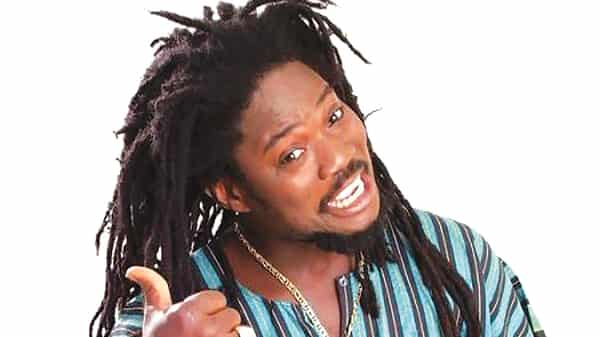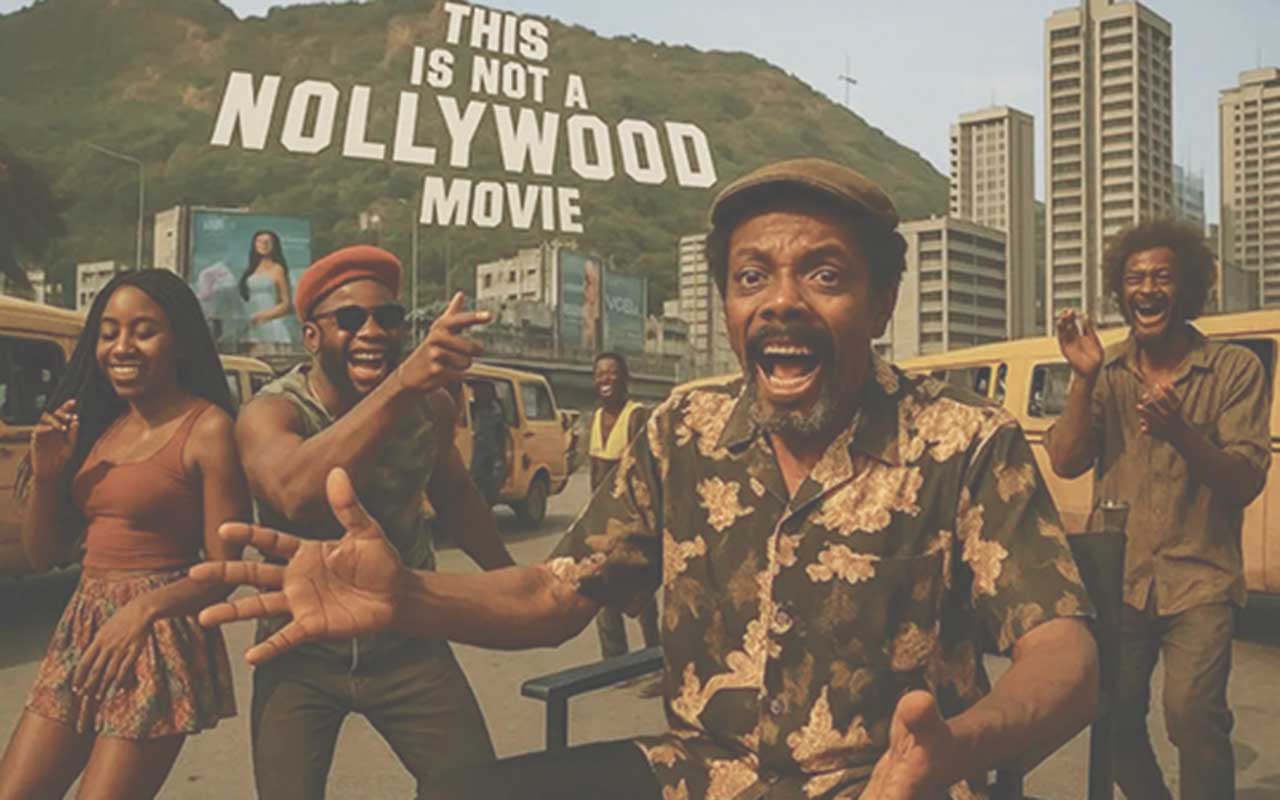From the late 90s to the early 2000s, galala music and dance were everywhere, especially in Lagos. They were Siamese twins birthed in Ajegunle area of Lagos. The style of galala was different from other musical genres before it: the highlife, reggae, rhythm and blues, afro-pop, and others. Within a decade, both the music and dance moved from obscurity to dominating the scene, by early 2000s, the genre started to disappeare. And almost immediately, Ajegunle, which was known for producing a-list artistes seems to have lost the Midas touch of birthing top rated music artistes too, GBENGA SALAU reports.
Galala Music came into the scene in the 1990s with a bang. Many embraced it. And in most commercial vehicles across Lagos, galala songs were the dose drivers gave commuters, which they listened to. Most times, commuters reechoed the songs, because of the contemporary issues they treated.
Also, in local parties and experiential marketing activations, galala music often tops the list of music played or artiste invited to perform. Children danced to it, happily.
It was an innovation, a new genre with a lot of local flair from Ajegunle, popularly called Aj City, a Lagos suburb, performed mostly in Pidgin English. The city completely owned it, as it produced several a-list artistes. The genre dominated airwaves and even spread to other parts of the country.
Although galala music and its artistes were synonymous with ghetto lifestyle, lyrics of the songs were what affected everyday Nigerian. Beyond the protest lyrics in the songs, there were also themes that addressed love, community struggles, and the everyday life of the common man, making it relatable to a broad audience.
But by mid-2000s, the music started going off the radar and has continued to do so till today. Worthy to mention is that during the period of its reign, Aj produced a number of artistes who proudly celebrated this music. These artistes include Daddy Showkey, Baba Fryo, Daddy Fresh, Father U-Turn (late), Marvellous Benji, Blackface, African China and Original Stereoma (Ekwe), among others, who did not make it to national limelight.
While these artistes have technically retired, not much of these songs are available for the listening pleasure of those who want to or is performed across the country.
Many attribute this diminishing acceptance to the arrival of a new genre of music with elements of Afro-vibes. The term galala is believed to be derived from the local dialect, signifying joy and exuberance. Of note is that galala dance was an integral part of the music, marked by its energetic and expressive movements.
Dancers often perform in groups, creating a visual spectacle that complements the music’s vibrant sound. The choreography featured a variety of movements, from intricate footwork to rhythmic body shakes, reflecting the spontaneity and joy inherent in galala.
The Chairman, Performing Musicians Employers Association of Nigeria, Ajegunle Chapter, Bright John Odede, providing some context about the origin of the music, said it is an offspring of Jamaica’s reggae dancehall music.
He added: “In the late 80s and early 90s, the Nigerian music industry was dominated by foreign music, we had different genres of music from Africa and America played everywhere, in clubs, parties, on radio and television.
“In Aj City, reggae dancehall was what we were playing; we had a dancehall called RAGA Dub Chapel (RDC) owned by late Johnny Nab. RDC was not just a dancehall but was a grooming ground for upcoming artists.
“A lot of Aj dancehall artistes went through RDC, they were taught how to do dancehall music in Jamaica style, as time went by, the need for us to do it in our own way and language (pidgin) instead of the Jamaica patio came and we did.”
Providing more insights into how the music came about, Aj. Dagga Tolar, a popular voice in the creative sector in Ajegunle, said to truly grasp the evolution of these music and dance styles from Ajegunle, one must see the connection with reggae and dance hall music.
“It is crucial to look back to the military dictatorship era, the imposition of the Structural Adjustment Program (SAP) along with its neoliberal regime as dictated by the IMF/World Bank in the late 1980s and early 1990s, which had devastating effects on the Nigeria’s economy.
“This period saw a significant devaluation of the currency and the collapse of many industries, including major record labels like Polygram (Premier Music Label) and Tabansi Records.”
Dagga Tolar noted that the collapse of record labels during the late 80s as a result of the economic crisis made it difficult for the previous generation of musicians like Mandators, Majek Fashek, Ras Kimono, Evi-Edna Ogholi to have successors, as the music industry infrastructure was no longer in place.
He further said: “The collapse of these record labels; a consequence of the huge capital and shrinking profit to be made, meant that they were no longer willing to invest in new talents.
“The big record labels supporting and nurturing new talents suddenly became frozen out. Interestingly, even their successful acts joined the ‘Andrew Check out’ syndrome, which was then the vogue of what we now refer to as Japa.
“In Ajegunle, reggae music began to gain traction in the early 1980s. This rise was partly influenced by international acts like King Yellowman, whose Grammy nomination in 1985 gave a worldwide seal of approval to dancehall reggae music. Call it rub-a-dub, ragamuffin. Dancehall music was the new face of reggae music, inspiring many in the slum neighbourhoods of Kingston, Jamaica. Nigeria was not to be left out with Ajegunle, signing itself into play. This eventually led to the emergence of a new reggae style in the late ‘80s and ‘90s, which morphed into ragamuffin music, with artists like Ninjaman, Shabba Ranks, Cocoa Tea, Buju Baton at the forefront.
“Ajegunle youth, particularly in the late ‘80s and early ‘90s, were heavily influenced by this dancehall reggae music. They no longer needed a full band to perform. Sound systems became the norm, and DJs began using turntables and sound tracks of dub plates with deejays flexing their own originals on it.
“This shift marked the beginning of a new generation of musicians that enabled a dance group like “DE Pretty Busy Boys” made up of Innocent Michael Fresh, Sexy Pretty, Cashman Davies and Showkey, to have two of their members, Daddy Fresh and Daddy Showkey significantly hit the airwaves nationally.”
Dagga Tolar, therefore, argued that what many called Galala Music today was essentially a dub-plate influenced reggae sound, rooted in the production efforts of John Nabena (Daddy Ranking), owner of Raga Dub Chapel and Mighty Mouse, owner of Jahoha Studios in Ajegunle.
“The Dance hall home and venue at Raga Dub Chapel and Jahoha Studio laid the groundwork for this new sound. However, a key turning point came when Dr. Nwankwo, a medical doctor based in Ajegunle, played a pivotal role by establishing Felin Records, thereon, taking up the task of providing the capital to transit these raw talents of the dancehall to producing records that helped take this music from the sound system environment into professional studio recordings for larger audience to listen, appreciate and fall in love with.
“The success of artistes like Daddy Fresh and Showkey made it clear that there was money to be made, and that encouraged more investment into the scene.”
Dagga Tolar also believed another significant factor was the role played by marketers in Nosamu Street in Ajegunle and Alaba International Market.
According to him, these areas became key hubs for the production and distribution of music cassettes, which helped boost the visibility of these artists.
“But again the evolution of music distribution and format from cassettes, to CDs, and now to online has today upstaged all of the above.
“In essence, what we saw was an effort to indigenise reggae music in Nigeria, which led to what we now call galala. But the economic struggles, the collapse of the record industry, and the rise of street-based marketing played major roles in shaping this music’s evolution,” Dagga Tolar stated.
But as Odede stated, the music didn’t go off completely, but slowed down.
“Things changed when some artists came in with huge amount of money, more professional and took over the industry. We still have some of our boys doing us proud the likes of Kcee, Don Jazzy, Mastercraft, among others.”
Dagga Tolar did not agree that the localisation of the music to Ajegunle played a role in its declining acceptance. He said: “In fact, galala wasn’t localised to Ajegunle as people often assumed. There was an “upcountry movement,” where many of those who made it big in Ajegunle eventually moved out of the area as their status improved.
“They didn’t break with the culture; they carried it with them, taking it to a broader audience.” He, however, said the collapse of the music industry, the switching of formats from cassettes to CDs, and now to digital music platforms have all contributed to the decline.
“Many of the old marketing channels, like the Alaba boys and Nosamu Street, have collapsed too. Despite the emergence of new studios in Ajegunle, like Boom Studios, there’s still no one strong enough to invest in these new talents and push them to the next level.”
“The problem now is that the Nigerian music scene has changed. The likes of Wizkid, Burna Boy, and Davido have raised the bar for what it means to be a successful artiste. Thus, for Aj to return to prominence, it would need to produce an artist with the same kind of international appeal and support.”
On the possibility of the music coming into the consciousness of Nigerians again, Odede said it is possible and efforts are geared towards that direction to bring it back through coaching, grooming and empowering the upcoming artists.
Dagga Tolar also said it is possible to bring back the good old days in Aj when it comes to music. He maintained that the talents are still there, but they need the right infrastructure and financial support.
“Back in the days, record labels like Polygram and Tabansi provided the foundation for artists to succeed. Now, there needs to be investment in music production, marketing, and promotion. It’s not just about talent; it’s about creating the necessary leverage for these artists to break through internationally.” He added that the emergence of pop music, with acts like Tu Face, Blackface, and others, shifted the landscape.
“They distilled reggae and transited sounds into pop, which opened the door for a new era of music. However, this evolution has meant that people are now looking for different sounds. All efforts to repeat the success of Showkey in the same mode and vogue will continue to hit the rock.
“Today, the dominance of artists like Wizkid and Burna Boy means that the music scene is far more competitive than before. For Ajegunle to reclaim its place, it needs to adapt to these new standards and produce artists with global potential.
“If it can do that, then we might see a revival. But it’s going to take more than just talent, it requires serious investment in the right infrastructure to push that talent forward, and of course to be armed with all of the knowledge and technical know-how of the music industry today.”
Also commenting, Odede observed that Ajegunle used to have major music marketers along Nasamu Street in addition to some studios which made it easy for its artists to record and submit their demo.
“If accepted, the marketer will carry on the project, but at a time the marketers couldn’t continue because they were dealing in cassette. In the early 2000, cassettes went off and CD marketers in Alaba International markets took over, bringing in substandard and cheap CDs from Singapore.
“The Ajegunle marketers could not compete because it was expensive producing CDs in Nigeria. That affected the music industry.”






